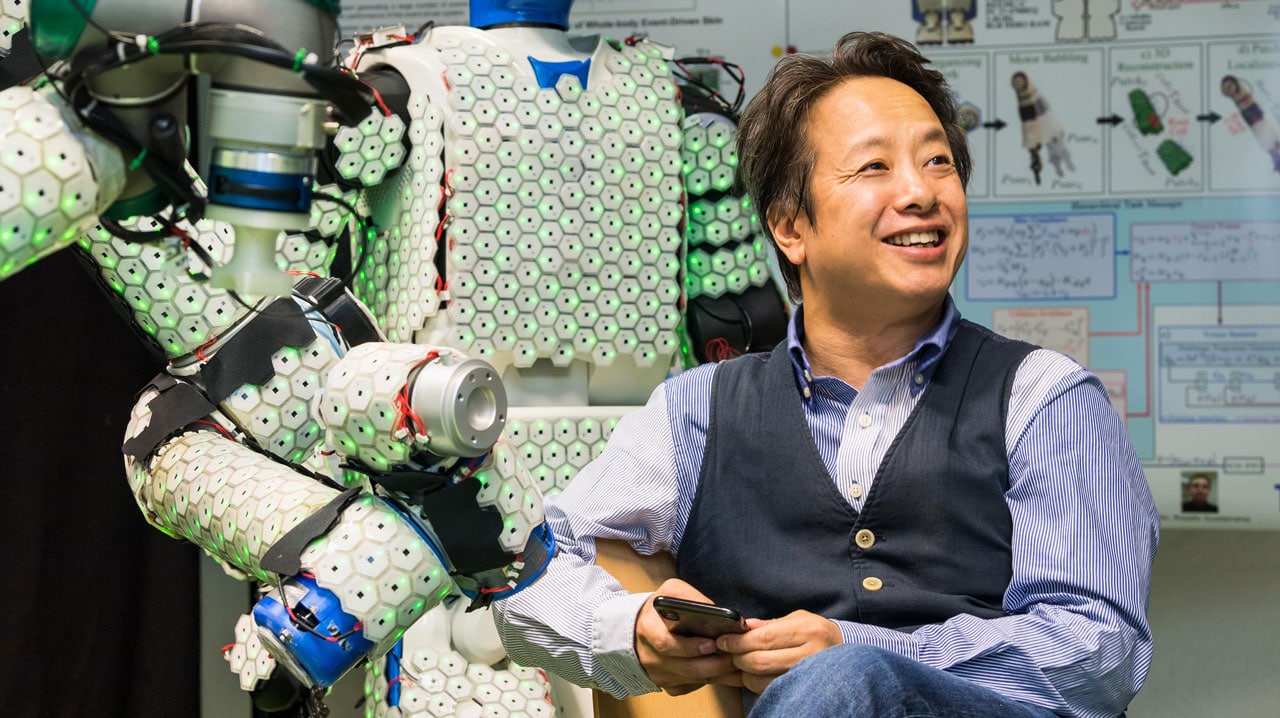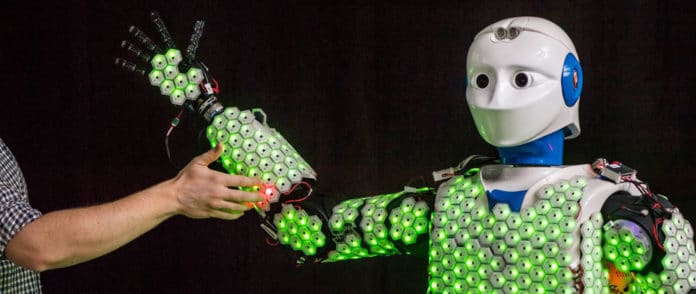Inspired by human skin, scientists at the Technical University of Munich (TUM) have developed artificial skin with control algorithms and utilized it to create the first autonomous humanoid robot with full-body artificial skin.
The skin comprises hexagonal cells about the size of a two-euro coin. Each is equipped with microprocessors and sensors to detect contact, acceleration, proximity, and temperature. Such artificial skin empowers robots to see their surroundings in much greater detail and with more sensitivity. This does not just cause them to move securely. It makes them more secure when operating near people and enables them to foresee and actively avoid contact.
Human skin has around 5 million receptors. Efforts to implement consistent data processing from sensors in artificial skin soon run up against limits. Past frameworks were quickly overburdened with information from just a few hundred sensors.

Image: Astrid Eckert / TUM
To address this problem, scientists do not monitor the skin cells continuously but rather with an event-based system. This decreases the processing effort by up to 90 percent. The trick: The individual cells transmit data from their sensors just when values are changed. This is similar to the way the human nervous system works. For instance, we feel a hat when we first put it on, yet we rapidly get used to the sensation. There is no compelling reason to see the cap again until the wind passes it over our heads. This empowers our nervous system to concentrate on new impressions that require a physical reaction.
Through the event-based approach, scientists were able to successfully apply artificial skin to a human-size autonomous robot not dependent on any external computation. The H-1 robot is equipped with 1260 cells (with more than 13000 sensors) on its upper body, arms, legs, and even the soles of its feet. This gives it a new “bodily sensation.” For example, with its sensitive feet, H-1 can respond to uneven floor surfaces and even balance on one leg.
Gordon Cheng said, “With its special skin, the H-1 can even hug a person safely. That is less trivial than it sounds: Robots can exert forces that would seriously injure a human being. During a hug, two bodies are touching in many different places. The robot must use this complex information to calculate the right movements and exert the correct contact pressures. This might not be as important in industrial applications, but in areas such as nursing care, robots must be designed for very close contact with people.”
“The skin system is also highly robust and versatile. Because the skin consists of cells, and not a single piece of material, it remains functional even if some cells stop working.”
“Our system is designed to work trouble-free and quickly with all kinds of robots. Now we’re working to create smaller skin cells with the potential to be produced in larger numbers.”
Journal Reference
- G. Cheng, E. Dean-Leon, F. Bergner, J. Rogelio Guadarrama Olvera, Q. Leboutet and P. Mittendorfer, “A Comprehensive Realization of Robot Skin: Sensors, Sensing, Control, and Applications,” in Proceedings of the IEEE, vol. 107, no. 10, pp. 2034-2051, Oct. 2019, DOI: 10.1109/JPROC.2019.2933348.
